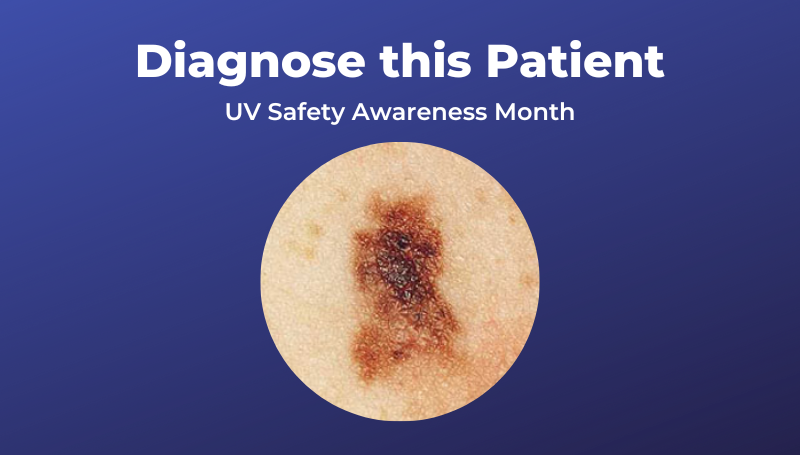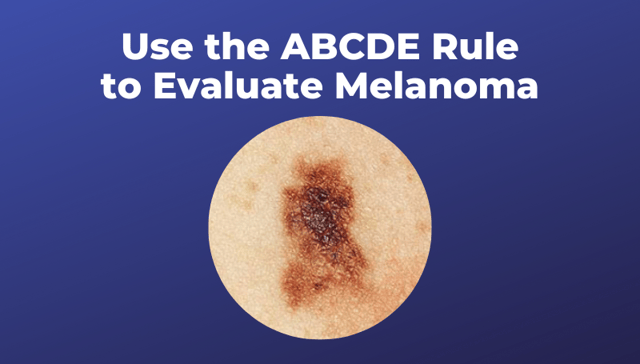
July is UV Safety Awareness Month, a perfect time to educate your patients about UV safety and skin health so they can be safe this summer. Test your knowledge and see if you can answer this scenario from our Internal Medicine Core Scripts® Flashcards for UV Safety Awareness Month! Then, review an easy-to-memorize mnemonic to help you evaluate the condition in your daily practice.
Diagnose This Patient
A fair-skinned, middle-aged woman presents with:
- Skin lesion on her thigh
- History of extensive sun exposure as a child with repeated sunburns
- Flat, asymmetric, pigmented lesion that lacks uniform color and is ~ 8 mm
- Enlargement of the lesion over the past few months
What is your diagnosis?
Did You Diagnose Correctly?
If you diagnosed this patient with melanoma, you are correct!
Melanoma tends to occur more commonly in fair-skinned, light-haired, and freckled people with sunlight exposure, especially those who had severe sunburns in childhood. There has been a 300% increase in the incidence of melanoma in the past 40 years. Other risk factors are numerous dysplastic nevi, a family history of melanoma, a high number of ordinary nevi, a congenital nevus, previous personal history, and immunosuppression.
Melanoma is more common in women < 50 years of age and in men > 50. It commonly presents on the lower legs of women and the backs of men.
There are 4 types of melanoma: superficial spreading, lentigo maligna, acral lentiginous (palms, soles, nails, and mucosa), and nodular. Nodular is the only 1 of the 4 types that does not exhibit radial growth; instead, it grows deeply vertical, with an increased incidence of early metastasis.
Use This Mnemonic To Evaluate Melanoma
 Evaluate Melanoma with this easy-to-remember mnemonic tool.
Evaluate Melanoma with this easy-to-remember mnemonic tool.
Remember the ABCDE features of melanoma: asymmetry, border irregularities, color variation, diameter > 6 mm, evolution or enlargement of color change, shape, or symptoms.
Check for the ABCDE features when evaluating a patient who may have Melanoma.
General prognostic factors include age and sex of the patient (better prognosis in younger men and older women), and location of the lesion (extremities have better outcomes than the trunk). Superficial and nodular types have a poorer prognosis. Specific prognosis factors are depth of the lesion (deeper lesions have a poorer outcome), mitotic index, ulceration, number of regional lymph nodes, and systemic metastases.
Staging at diagnosis predicts survival. Rates from 2015 are 99% for localized, 65% for regional, and 25% for distant.
Dx: Excisional skin biopsy
Tx: Based on staging; surgical excision with wide margins + subdermal fat on the bottom ± sentinel lymph node biopsy
Ready to really test your knowledge? Sharpen your diagnostic skills with a free trial of our Study Strong Essentials. You'll get access to the Pulmonary Medicine Section of our Flashcards, Q&As, and Digital Core free for 30 days.



.png?width=800&name=Copy%20of%20Copy%20of%20Free%20Trial%20Promo%20(800%20%C3%97%20455%20px).png)
